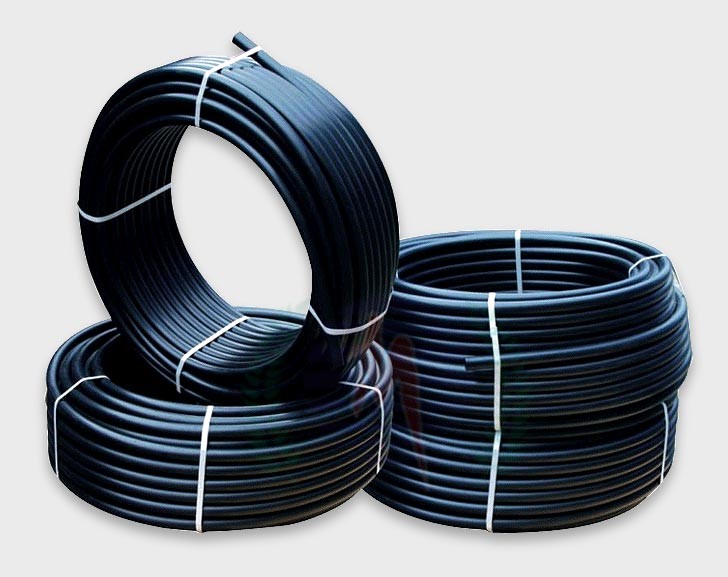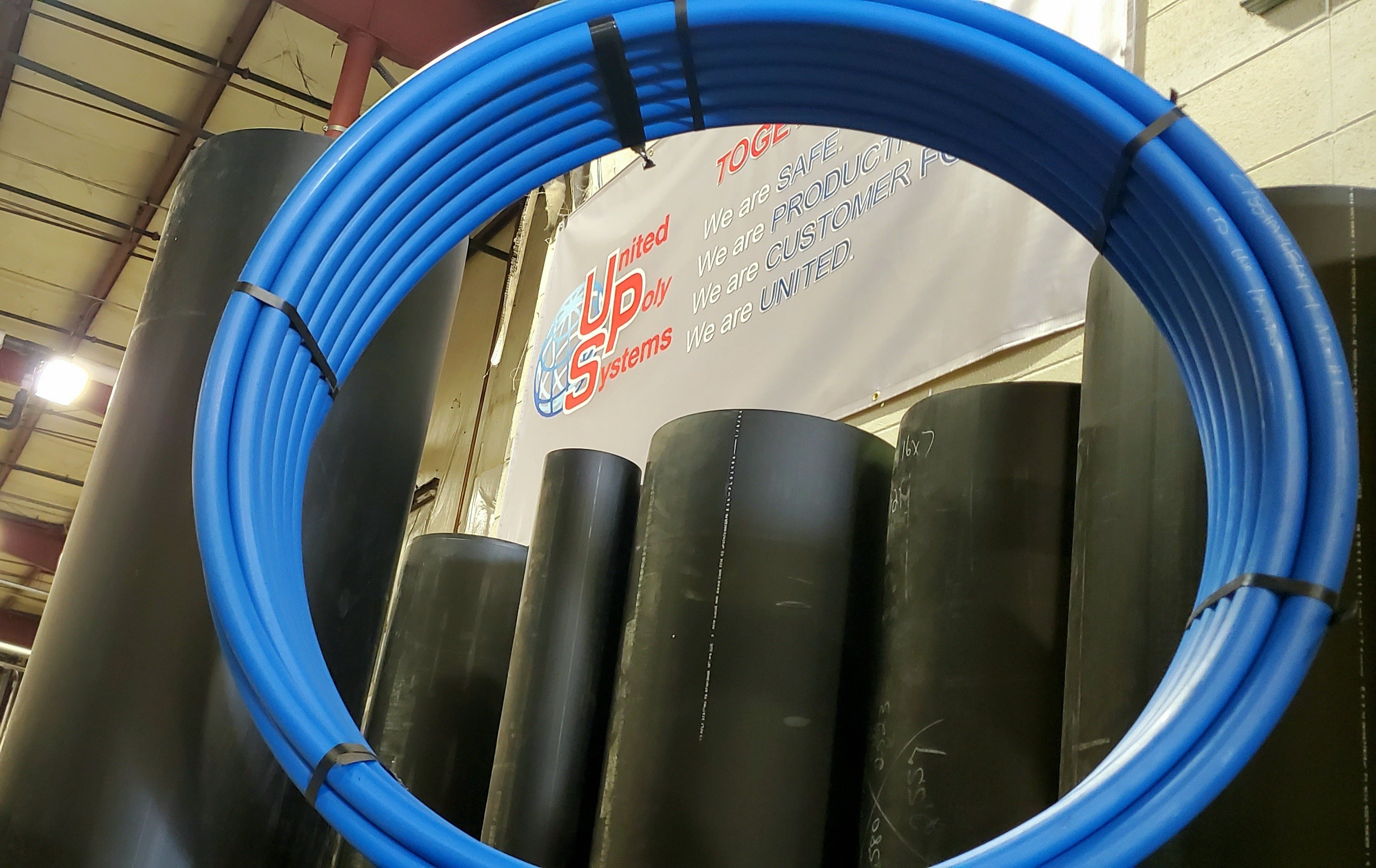Why Partnering with Pipe Supplier American Plastics Midland Ensures Timely Supply
The Vital Steps for Effective Installation of HDPE Pipe in Your Following Project
Successful installation of HDPE pipeline calls for careful planning and implementation. Key steps consist of reviewing task requirements, preparing the site, and picking appropriate joining methods. Each phase plays an essential role in making certain the honesty and performance of the pipeline. Recognizing these essential steps can significantly affect the total success of the task - American Plastics HDPE Pipe for Oilfield. The nuances of each step might hold the trick to conquering common obstacles dealt with during installation.
Recognizing the Perks of HDPE Pipe
High-density polyethylene (HDPE) pipeline supplies many advantages that make it a preferred choice for various applications. Its high resistance to deterioration and chemicals warranties durability sought after atmospheres, greatly expanding the life expectancy of installations. In addition, HDPE's flexibility permits less complicated setup, particularly in tough terrains, as it can bend without breaking. The light-weight nature of HDPE pipeline streamlines transport and handling, decreasing labor prices during setup.
Moreover, HDPE pipeline is known for its reduced friction coefficient, which boosts fluid circulation and reduces power usage. Its seamless building reduces the danger of leakages, adding to far better resource management and environmental management. In addition, HDPE is recyclable, aligning with sustainable methods and reducing environmental effect. On the whole, the combination of stamina, adaptability, and eco-friendliness makes HDPE pipe an exceptional selection for a large range of projects, from water distribution to commercial applications.
Planning Your HDPE Pipeline Setup
When preparing a setup of HDPE pipe, cautious consideration of several crucial aspects is crucial to safeguard an effective project. Project managers need to assess the certain demands of the pipeline, including the intended usage, flow prices, and environmental problems. Recognizing these parameters will certainly guide the choice of ideal pipe dimensions and material grade.
Next off, timelines ought to be established, considering purchase timetables and any prospective delays. Control with local authorities for licenses and governing compliance is likewise vital. Furthermore, an in-depth budget needs to be prepared, including all costs related to products, labor, and machinery.
It is vital to involve a qualified team experienced in HDPE pipe setup. Their competence will assist minimize dangers, guarantee adherence to market requirements, and ultimately add to the project's success. Detailed preparation lays the foundation for a smooth installation procedure and lasting performance of the HDPE piping system.
Preparing the Website for Installation
Proper website preparation is vital for the successful installation of HDPE pipeline. Prior to setup begins, the site should be thoroughly evaluated to guarantee it satisfies all necessary demands. This includes evaluating the ground for existing frameworks, utilities, and potential hazards that could hinder the installment process.

Proper altitude and alignment need to be developed to maintain a consistent gradient for drain functions. Correct water drainage around the installation site is also imperative to avoid water build-up, which can cause difficulties down the line.
Strategies for Signing Up With HDPE Pipes
Achieving a trusted connection between HDPE pipes is important for guaranteeing the integrity and longevity of the installation. Various strategies exist for signing up with these pipelines, each fit for various job demands. Fusion welding is one of the most common approaches, making use of warm to bond the pipe ends with each other, developing a smooth and durable link. This technique can be further categorized into socket blend and butt blend, relying on the pipeline arrangements.
Mechanical installations are another choice, using clamps and threaded adapters to join sections of HDPE pipeline. While generally faster to install, they might call for extra upkeep in time. Electrofusion is a customized approach that involves making use of electric current to warmth and fuse the pipelines through specifically designed installations, ensuring a solid bond. Picking the proper joining technique is important, as it directly impacts the total performance and integrity of the HDPE piping system in the designated application.
Evaluating and Examination of Installed Piping
The testing and examination of installed HDPE pipelines are critical to ensuring their capability and longevity. This procedure encompasses visual inspection strategies, pressure screening techniques, and leak discovery procedures to determine prospective issues. By employing these methods, professionals can verify the honesty of the setup prior to it is placed into usage.
Aesthetic Examination Techniques
Employing effective visual assessment strategies is vital for guaranteeing the integrity of set up HDPE pipes. Examiners must methodically check out all visible sections of the pipeline to identify any type of indicators of damages, imbalance, or inappropriate installment. Key signs to examine consist of joint honesty, surface area abnormalities, and links. Inspectors may make use of devices such as magnifying glasses or video cameras to boost exposure and information. It is vital to look for indications of ecological anxiety, such as buckling or extreme flexing, which can endanger efficiency. Consistent paperwork of findings allows for tracking modifications over time and assists guide essential repair services. By sticking to recognized aesthetic inspection methods, project teams can especially lower the danger of future failures and guarantee lasting dependability of the piping system.
Pressure Examining Techniques
Visual inspection works as a preliminary measure, yet it is not enough by itself to guarantee the efficiency of mounted HDPE pipes. Pressure screening approaches are crucial for making sure the integrity of these systems. Typically, hydrostatic screening is employed, where the pipelines are filled up with water and subjected to stress degrees above the designated operating stress. This method assists identify weaknesses or possible leaks. Pneumatic screening can also be made use of, although it carries better risks because of the compressibility of air. No matter the technique chosen, sticking to market standards and safety methods is essential. After performing pressure examinations, thorough documents is required to validate the results and confirm that the installation fulfills all functional requirements before continuing to the next stage of the project.

Drip Detection Treatments
Exactly how can one ensure that mounted HDPE pipelines are free from leaks? Efficient leak discovery treatments are essential to secure the stability of the system. At first, visual assessments must be pex pipe fittings executed, looking for signs of water build-up or soil erosion around pipeline joints. Following this, stress testing can verify the system's stamina. A typical method is the hydrostatic examination, where water is presented under pressure, checking for drops that suggest potential leaks. Additionally, progressed innovations, such as acoustic sensors or infrared thermography, can identify leaks that may not show up. Routine surveillance and upkeep additional add to the durability of HDPE pipes, guaranteeing they published here continue to be leak-free throughout their operational life expectancy. Appropriate documentation of these procedures is essential for compliance and future referral.
Upkeep Tips for Long-Term Performance
To ensure the longevity of HDPE pipelines, developing a regular evaluation routine is important. This aggressive approach enables the early detection of possible problems, decreasing costly repairs. In addition, implementing appropriate cleaning techniques will certainly help preserve peak efficiency and avoid accumulation that can impact capability.
Regular Evaluation Arrange
Although HDPE pipelines are understood for their resilience and resistance to corrosion, developing a normal evaluation schedule is important for ensuring their long-lasting efficiency. Regular examinations aid identify possible issues such as leaks, joint integrity, and environmental effects that may affect the pipe's functionality. It is suggested that assessments happen at the very least biannually, or a lot more often in environments with severe conditions. hdpe pipe suppliers Midland TX. Throughout these analyses, visual checks must be carried out to find signs of wear or damage. Furthermore, using technology such as ultrasonic testing can give further understandings into the pipe's problem. By implementing an organized assessment timetable, task supervisors can proactively resolve problems, therefore expanding the life-span of HDPE pipes and preserving system efficiency
Appropriate Cleansing Techniques
Appropriate cleansing strategies play a crucial duty in keeping the long-lasting performance of HDPE pipelines. Regular cleaning avoids the accumulation of particles, sediment, and biofilm, which can result in clogs and decreased circulation effectiveness. Operators must utilize methods such as high-pressure water jetting or foam cleansing to effectively eliminate impurities without harming the pipe surface area. It is vital to prevent pvc coupling using harsh chemicals that may break down HDPE product. Furthermore, set up upkeep checks should include aesthetic evaluations for any kind of signs of wear or damage. Effectively trained personnel should bring out these cleansing processes, ensuring conformity with security and environmental guidelines. By applying these practices, the life-span of HDPE pipelines can be considerably extended, guaranteeing optimal efficiency throughout their operational life.
Frequently Asked Concerns
What Are the Environmental Influences of HDPE Pipeline Manufacturing?
The environmental effects of HDPE pipeline production consist of greenhouse gas discharges, power intake during manufacturing, possible plastic pollution, and difficulties in recycling. HDPE's durability and resistance to rust can alleviate some environmental problems.
Just How Does HDPE Pipeline Contrast to Other Products?

What Tools Are Essential for HDPE Pipeline Setup?
Important tools for HDPE pipeline installation consist of a combination device, pipe cutters, shovels, determining tape, and security equipment. Proper devices assurances effective, risk-free handling and installment, contributing to the task's overall success and honesty.
Exist Any Type Of Details Rules for HDPE Pipe Installment?
Specific policies for HDPE pipe installation vary by area, frequently governed by regional, state, or government codes. Compliance with these policies guarantees security, environmental management, and capability, making adherence vital for effective task outcomes.
Can HDPE Piping Be Recycled After Use?
Yes, HDPE pipelines can be recycled after usage. Their thermoplastic nature permits reprocessing, making them suitable for recycling into new products. This sustainability facet adds to environmental preservation and promotes circular economic situation practices in building.